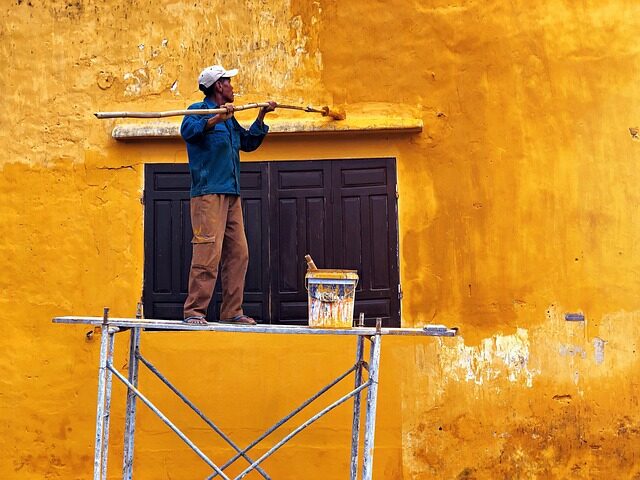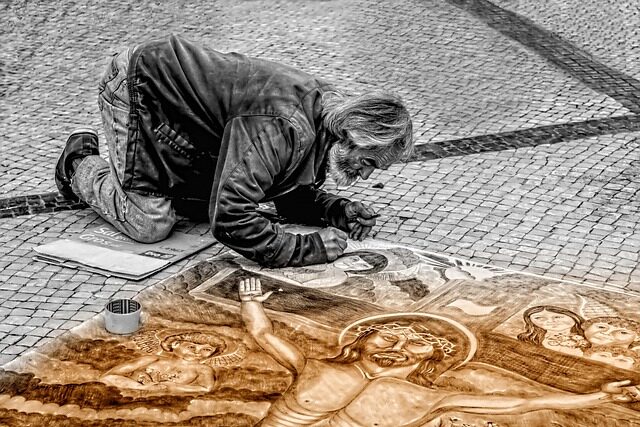Sweden has been a cradle for a multitude of gifted artists who have left indelible marks on the canvas of art history. From the serene watercolors depicting family life to the avant-garde strokes of abstract pioneers, the legacy of famous Swedish painters continues to captivate art enthusiasts around the globe.
With an artistic heritage that stretches from the bucolic landscapes of the 19th century to the bold expressions of contemporary visionaries, Sweden’s contribution to the visual arts is both profound and diverse. These artists have not only defined the cultural contours of their homeland but have also influenced artistic movements worldwide.
What Are The Most Famous Swedish Painters?
The landscape of Swedish art is dotted with figures who have achieved fame for their distinctive styles and compelling subjects. Carl Larsson stands out as a quintessential Swedish artist whose watercolors depict an idyllic, joyous family life, resonating with viewers for their warmth and charm.
Alongside Larsson, Hilma af Klint emerges as a revolutionary figure, whose abstract paintings predate many of her contemporaries in the same genre. Her spiritual and bold compositions have gained posthumous recognition, placing her among the most intriguing artists of the 20th century.
The elegant and refined portraits of Alexander Roslin have enchanted art lovers with their aristocratic grace. Often overshadowed by French contemporaries, Roslin’s work remains a testament to his incredible skill in capturing the subtleties of his sitters.

Delving into the realm of fantasy and folklore, John Bauer’s illustrations bring to life the mystical tales of Swedish legends. His work is cherished for its otherworldly charm and its deep connection to the Scandinavian storytelling tradition.
Lastly, the wildlife depictions of Bruno Liljefors showcase the raw beauty of the Nordic fauna. His paintings are celebrated for their dynamic realism and the ability to convey the untamed spirit of his subjects.
Who Are The Notable Female Swedish Painters?
The Swedish art scene has seen the rise of many renowned female painters, each bringing a unique perspective to the canvas. Notably, Hilma af Klint stands out as a pioneer in abstract painting, whose works were not fully appreciated until long after her death.
Among others, Sigrid Hjertén is celebrated for her vibrant modernist scenes and a bold use of color, often depicting her personal struggles with societal norms and her own health. The impressionistic and post-impressionistic scenes by Anna Boberg challenge and inspire, reflecting her status as one of the leading figures of her time.
Another revered artist, Karin Mamma Andersson, is known for her ethereal and haunting scenes that traverse the boundaries between reality and imagination. The legacy of these female artists enriches the tapestry of Swedish art history, proving that the creative spirit knows no gender.

Which Swedish Painters Specialized In Portraits?
Portraiture has been a revered genre in Swedish art, with numerous painters dedicating their careers to capturing the human essence. Alexander Roslin is perhaps the most famous for his adept portrayals of the European elite, with a precision and sensitivity that immortalize his subjects.
Anders Zorn, another prominent figure, is praised for his ability to render the texture of skin and fabric, bringing his sitters to life with each masterful stroke. His portraits are notable for their lively realism and the palpable presence they convey.
Additionally, the 18th-century artist Gustaf Lundberg contributed significantly to the portrait genre with his pastel works. His finesse in depicting royalty and nobility secured his reputation as one of the era’s foremost portraitists.
What Are The Contributions Of 20th-Century Swedish Painters?
The 20th century was a period of dynamic change in the Swedish art scene. Notable contributions include famous Swedish painters from the 20th century like Isaac Grünewald and Einar Jolin, who brought the influence of French modernism to the North.
Hjertén and her husband, Isaac Grünewald, were instrumental in introducing Swedish audiences to the vibrant colors and forms of modernist movements, shaking the foundations of traditional Swedish art preferences.

As part of the Halmstad Group, Erik Olson and Esaias Thorén explored surrealism and cubism, adding depth and diversity to the Swedish art landscape. In addition, the social realism depicted by artists like Evert Lundquist captured the spirit of the times, portraying the everyday life of Swedes with empathy and candor.
Who Are The Contemporary Swedish Painters?
Contemporary Swedish art is as vibrant and diverse as its rich history. Artists like Lars Lerin are celebrated for their mesmerizing watercolors that capture the Nordic light and landscape with a transcendent quality.
Mamma Andersson continues to intrigue with her dreamlike compositions that blur the lines between reality and fiction. Artists such as Anna Bjerger and Fredrik Söderberg also contribute to the contemporary conversation with their distinct styles and subjects.
Emerging talents like Nina Bondeson and Jenny Källman are ensuring that the narrative of Swedish art continues to evolve, with each brushstroke contributing to a broader global dialogue.
What Unique Styles Define Famous Swedish Painters?
The styles that define famous Swedish painters are as varied as the country’s landscapes. From Larsson’s endearing watercolors to af Klint’s bold abstract compositions, the versatility of Swedish art is evident.

The National Romantic style, exemplified by artists like Carl Larsson and Ernst Josephson, focused on capturing the spirit of Sweden’s nature and mythology. This movement was a reaction to the rapid industrialization of the time, seeking solace in the beauty of the Swedish countryside.
Funkis, or functionalism, also played a role in shaping the aesthetic of Swedish painters, where the focus was on simplicity, utility, and minimalism, reflecting broader societal shifts towards modernity.
For those interested in visual exploration, a video featuring the work of these notable artists can be found here:
In conclusion, the rich tapestry of Swedish painting is woven from the threads of tradition, innovation, and individual expression. As we continue to explore the contributions of these exceptional artists, we gain not only a deeper understanding of Sweden’s artistic heritage but also a broader perspective on the universal language of art.


